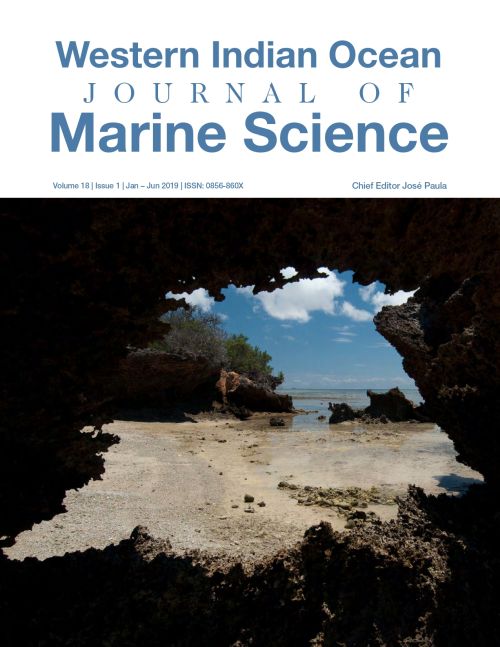Main Article Content
Post-bleaching mortality of a remote coral reef community in Seychelles, Western Indian Ocean
Abstract
The 2015–2016 global coral reef bleaching event was the most persistent and widespread in history. In its aftermath, efforts are required to understand the extent of the post-bleaching coral mortality and the ability of reefs to recover. This study used benthic photographic data to assess the post bleaching mortality of a coral reef community at D'Arros Island and St Joseph Atoll in the Republic of Seychelles, Western Indian Ocean. Results showed that April 2016 exhibited anomalously high sea temperatures that were above the regional coral bleaching threshold. In response, hard coral cover declined significantly from pre-bleaching levels of 28.5% in 2015 to 14.7% in 2017. Post-bleaching coral cover was significantly affected by site, with shallow reefs dominated by acroporids and pocilloporids exhibiting greater declines in hard coral than deeper sites. There were no changes to the macroalgal community but significant post-bleaching increases in coralline algae, which could facilitate reef recovery. This may be influenced by the reef’s associated herbivorous fish community and lack of concurrent anthropogenic stressors. Continued monitoring is required to assess long-term impacts of the bleaching event, however, initial evidence suggests D'Arros Island and St Joseph Atoll provide a suitable environment for post-bleaching coral recovery.






